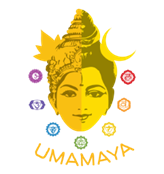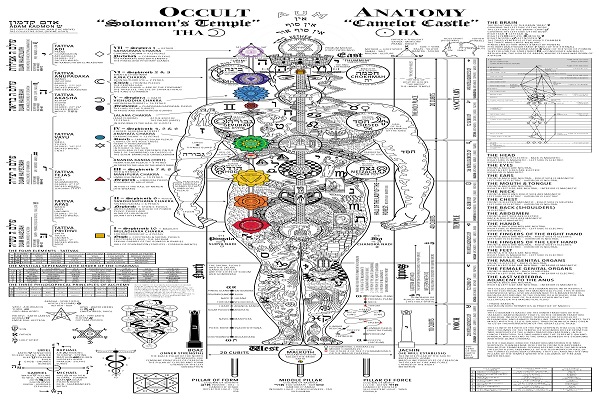One of the most fundamental questions that a spiritual seeker asks is ‘who am I’. We try to dissect the different dimensions of Self to get at the ultimate truth of the human condition. That’s why wisdom traditions, since time immemorial, have meticulously detailed the experience of embodied consciousness in precise maps, and given them to us as tools with which we might explore the existential terrain. We use these maps to formulate practices through which we might know, layer upon layer, both how we have come to be, and further, how we might become more—the best versions of ourselves. These maps are most often approached for the first time from the perspective of the lowest rung on the evolutionary ladder. It’s a rung on which we are completely absorbed in, and self-identified with, the most mundane and grossest of these existential layers—the body and its first five senses. For this reason, the sages quite literally took pains to present the subject in the most impeccable and precise language possible, so that a seeker would be ultimately enabled to find that which is being sought. Herself. That is the purpose of a map after all.
Regarding the poster below, someone took a great deal of time to superimpose a variety of thought-systems, legends, and myths, one upon another, to create an elaborate, mystical-looking work of art with absolutely no practical application. The creation of this work was indeed a meditation in itself, praiseworthy in that regard, and perhaps self-serving as a personal practice, but from the outside looking in, a neophyte seeking to use this mandala-like pseudo-representation of reality as a meditation will soon find themselves lost. There are far too many reasons for this statement to get into here, but I allude to several below:

In the poster you will primarily see representations from Kabbalah, Yoga-philosophy, and classical Tantra, with a smattering of Hermeticism, Freemasonry, astrology and theoretical magic thrown in for good measure. And perhaps because it just looks really cool.
As the note at the bottom right of the poster indicates, the classical traditions have been tweaked. Sushumna Nadi (the central channel) is not present between the right and left channels of sun and moon (Ida & Pingala). Jacob’s ladder appears to be incomplete, manifesting only at the highest dimension—but what do I know? The artist has a vision. And yet for all that, where is the Norse and Druidic? Only the most stereotypically occult is in evidence.
Then comes the woo-woo, most difficult to spot precisely because of the sheer volume of classical presentation, but a peek in the upper right-hand quadrant ought to inspire at least as many questions as oohs and ahs. The trinity is being correlated with physiology with a smattering of Chinese for good measure, capped off with linguistic attributions to boggle a mind that doesn’t know what it’s reading.
Perhaps the most pertinent problem is how to apply this art to purpose. Taken individually, any of the symbolism might be worked with, whether the intelligences, celestials, Tree of life, or the Tattvas—and I say this, too, with not a little hesitation, for when the starting point is as shaky as this, it is only a matter of time before the entire path collapses beneath our feet altogether. But why are there only 7 of 36 Tattvas represented? What’s on the artist’s mind? Why associate certain tattvas with Masonic language, and others with Roman empirical Latin (viz. INRI)? Or prana with Adi Tattva, for that matter, when it makes much more sense to correlate the Absolute with the Akasha, if anything, though I see where prana might be attractive, too. But, if manas is associated with Atziluth, then where are Chita, Bodhi and Ahamkara?
No, someone has taken far too many liberties, a common affliction of an over-indulged imagination, but it is only one well-versed in these arts that will be able to discern that. For the artist has not given us a Key to decipher his map. Everyone knows that a good map must come with a key and/or a legend.
This is an extremely enticing piece of work—one that many spiritual aspirants will immediately gravitate towards (I know I would!), and get lost in for years thinking themselves to have landed on some great and mystical truth. It’s what the Buddhists refer to as a near enemy of truth. Sometimes these enemies reveal themselves as ideas, like ‘unconditional love’ or ‘the guru is within me’—true on one level, not true on another. Often the enemy is found in the distortion of deeper truths, as seen in this ‘map’, revealing only enough of the truth to not make you dismiss it out of hand, however with a fragility at its core that is sure to cause problems later. It will cause problems because it is not true, no matter how much we might want to believe it is. There our foundation crumbles. This is the crux. How willing are we to set aside our own stories and beliefs, really dig in and get at the ultimate truth of the matter?
Camelot? Seriously?

…is a Saiva Tantrika, Gyana Yogi and founder of Uma Maheshwara Yoga & Ayurveda. David has an MA in Semiotics, lives in Japan with his family and works as a coach in L & D, devoting his time to developing science-based tools and programs that help people reach the fullest potential of the human condition.
Discover more from REAL YOGA
Subscribe to get the latest posts sent to your email.


